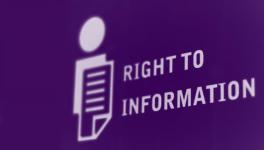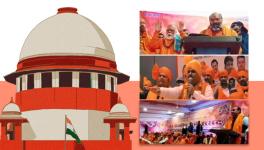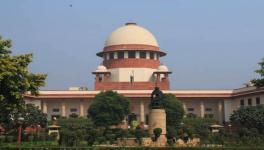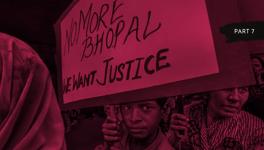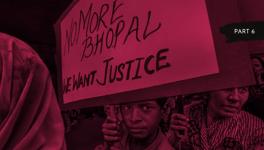Examining the Supreme Court’s Decision to Strike Down Section 66A of the IT Act: Some Unanswered Questions
The judgment of the Supreme Court in the recently adjudicated Shreya Singhal v. Union of India case has struck down Section 66A of the Information Technology Act, 2000, upheld the constitutional validity of Section 69A of the Act (that empowers the government to block online content) and read down Section 79 (which grants exemption from liability for carrying illegal content to intermediaries in the event certain conditions are fulfilled). The judgment has rightly been lauded across the country as a victory for the right to free speech and expression.
However, the judgment does raise some questions regarding the Court's examination of Sections 69A and Section 79 of the IT Act and whether the court has been inconsistent in its treatment of these two sections vis-à-vis its treatments of Section 66A.
Section 66A:
Section 66A – which criminalises the sending of certain offensive messages in the context of the Internet - has been in the news for a few years now due to the numerous arrests made under this provision (largely for innocuous statements being posted online).
In its judgment, the Court found that Section 66A invades the right of free speech arbitrarily, excessively and disproportionately, and so upsets the balance between the right to free speech and expression and the reasonable restrictions that may be imposed on this right. The Court found that Section 66A was overly broad and included several undefined and ambiguous terms.
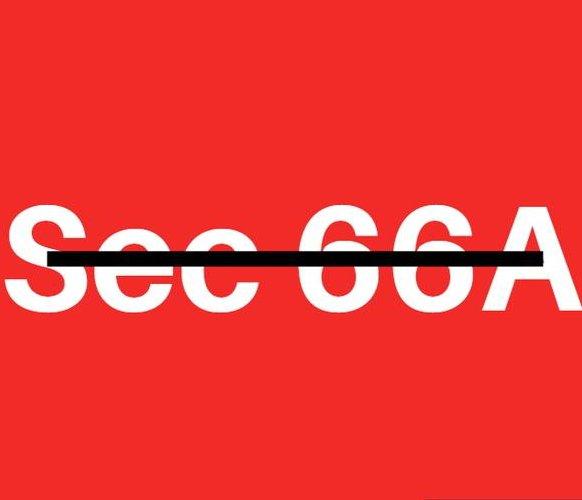
The Court in its judgment, makes several important observations concerning the right to free speech in India – most significantly perhaps in noting that fundamental rights would apply equally online and offline. Any restrictions on speech on the Internet must therefore also must fall within the constitutional framework permitted by A 14., A. 19, etc. of the Constitution.
Importantly, the court stated that in our constitutional scheme, the state cannot curtail freedom of speech in general public interest. The state can only limit free speech guaranteed in A. 19(1) on the specific grounds mentioned in A. 19(2); and then too, these restrictions must be reasonable in nature. This means that the act sought to be criminalized must have a direct connection or impact on the maintenance of public order within society. The acts that are proscribed must pose a clear and present danger to the order of society and the danger must be proximate and directly attributable to the proscribed act.
In practical terms, the judgment has the effect of striking Section 66A off the statute books. This does not mean however that all sorts of illicit behavior will now be permitted on the Internet. The IT Act contains other provisions that punish certain types of online behavior. For instance, Section 66C punishes identity theft, and 66E punishes the circulation of photos of the ‘private area’ of a person. Provisions of other laws – such as the Indian Penal Code – will continue to apply. Statements against communal harmony, for instance, punishable under Section 295A of the IPC, will continue to invite action even if made online.
Blocking websites under S. 69A:
Given the detailed discussion in the context of Section 66A, it is somewhat strange that the Court has dealt with Section 69A and Section 79A almost as an afterthought.
Section 69A of the IT Act permits the government to block content from being accessed by the public if certain conditions are met. The Government has notified the Information Technology (Procedure and Safeguards for Blocking for Access to Information) Rules, 2009 (hereinafter the “Blocking Rules”) under the provision that lay out detailed procedures and some safeguards for exercise of this power.
Examining the constitutionality of the provision and the rules notified in this regard, the Court has noted that the Blocking Rules provide for a hearing to the concerned intermediary or originator of content, and specific conditions must be fulfilled for content to be blocked. There are multiple levels of decision-making and review. Given these safeguards, the Court found the provision constitutional.
While we may accept the need for such a provision (particularly in the Indian context, where we have seen the Internet being (mis)used to spread rumours, cause riots etc.), it appears the Court has placed its seal of approval on the section, without fully considering the arguments made against it or in fact fully examining the procedures mandated under the Blocking Rules.
Section 69A fails to require any nexus between the content sought to be blocked and the possibility of disruption of public order.
The Court has, in the context of section 66A, explained how the nexus with disruption of public order is a sine qua non for the exercise of any powers of restriction under A 19(2). Section 69A of the IT Act does not contain any public order requirement for blocking web sites - something that the Supreme Court failed to consider. However, in this regard it may be argued that the public order requirement must be read into the section – particularly given the Supreme Courts directives concerning Section 66A.
It must also be kept in mind that the biggest problem with Section 69A is not the fact that the government has the power to block information; but that this power can be exercised arbitrarily, without transparency, and in a wholesale manner that leads to innocent speech also being proscribed. This is what leads to what the Supreme Court has referred to in the contest of Section 66A as the ‘chilling effect’.
It is also worth considering what happens in the case of information that is uploaded from outside India – will the originator of the content bother deposing before the Indian government on why the content should be kept online? So are the safeguards noted by the Court of any practical use?
An example in this regard is the case of a website like Github, which is a global code repository used by software engineers. Should the government issue (even a questionable) order to ISPs to block the website, ISPs may have little incentive to oppose this. In the event Github itself is unable or unwilling to make representations to the Indian government in this regard, the content will be taken down – even if this is against the interests of Indian citizens. It may therefore have been worthwhile considering if the relevant provision should permit ‘any interested person’ (rather than just the intermediary or originator of content) to make submissions on the need to censor content.
Section 79 and the Intermediary Guidelines:
Similarly, the logic of the Court regarding Section 79 and the Rules notified under this section is a little troubling.
Section 79 of the IT Act is an exemption provision stating that intermediaries are not liable for information they have made available or hosted, in the event they fulfill the various conditions mentioned in the section (such as not having initiated the transmission, edited or created the content). In addition, intermediaries are required to fulfill certain due diligence criteria to avail of the exemption. In the event the Intermediary receives “actual knowledge” of any illegal content, it must act to take down such content, or else it could face prosecution.
In essence, the section and its rules set up a system through which any person can complain to an Intermediary to take down certain content, alleging it violates the very broad provisions contained in Rule 3(2) of the Intermediary Guidelines. Notably, these Guidelines proscribe behavior that is ‘blasphemous’, ‘disparaging’, or ‘grossly harmful’. An intermediary is required to take down all such content if brought to its notice, or, indeed, if it discovers such content on its own.
The Supreme Court recognizes that such a system is unconstitutional inter alia as adjudicatory powers cannot be left to private intermediaries. (It appears, though, that the court only considers the practical aspects of how such a practice would inconvenience intermediaries, rather than the more critical question of whether they should be put in a position to make such a judgment). The Court notes the absence of any procedural safeguards in this system of taking down information, and so construes the provision to require intermediaries to act only upon receiving notice from the government or from a court.
The Court also recognizes that parts of Section 79 and the Intermediary Guidelines are unconstitutional. For instance, it notes that “unlawful acts beyond what is laid down in Article 19(2) obviously cannot form any part of Section 79.” However, it fails to explain why this should not be a basis for striking down relevant parts of Section 79 and /or its Rules on grounds similar to those it cited for Section 66A.
After all, the Intermediary Guidelines too contain numerous vague and arbitrary provisions, and, in fact, penalise certain types of behavior not otherwise considered crimes. These Guidelines require Intermediaries to take down information that is ‘disparaging’, ‘blasphemous’, or ‘grossly harmful’. The Supreme Court’s decision creates some uncertainty, given that it has failed to specifically mention which terms used in Rule 3(2) of the Intermediary Guidelines rules are ‘unlawful acts beyond what is laid down in Article 19(2)’.
The Supreme Court has also failed to note that Intermediary Guidelines actually go far beyond the scope of Section 79, in that it actually creates new offences not contemplated by the parent section. While the government is empowered by the IT Act to frame guidelines for the process of due diligence by Intermediaries, the Intermediary Guidelines go well beyond the scope of what could normally be considered “due diligence”. In law, rules cannot exceed the scope of the parent section and it is arguable that the Intermediary Guidelines should have been struck down on this ground alone.
Disclaimer: The views expressed here are the author's personal views, and do not necessarily represent the views of Newsclick
Get the latest reports & analysis with people's perspective on Protests, movements & deep analytical videos, discussions of the current affairs in your Telegram app. Subscribe to NewsClick's Telegram channel & get Real-Time updates on stories, as they get published on our website.












